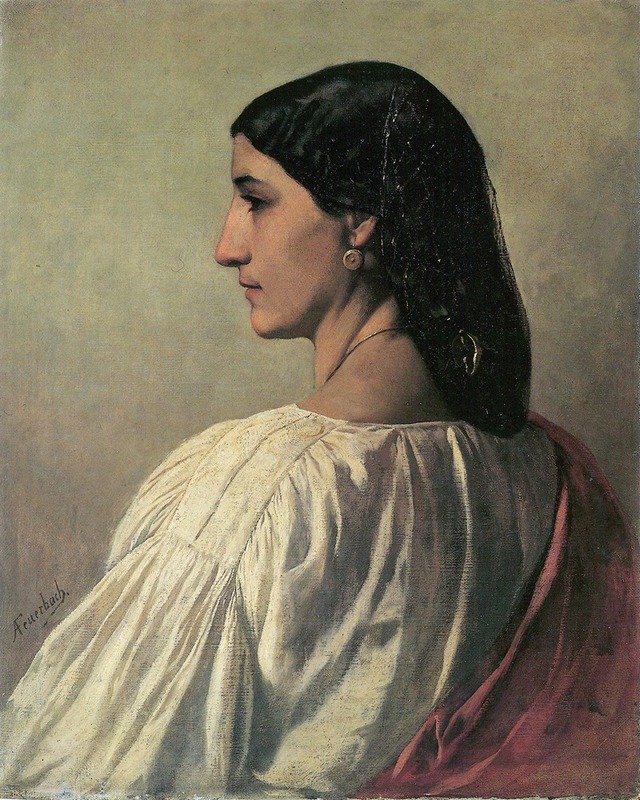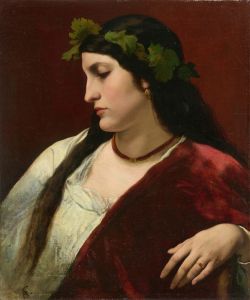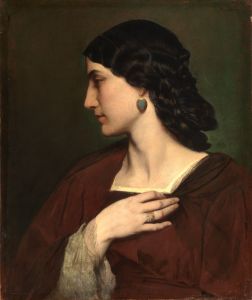
Nanna
A hand-painted replica of Anselm Feuerbach’s masterpiece Nanna, meticulously crafted by professional artists to capture the true essence of the original. Each piece is created with museum-quality canvas and rare mineral pigments, carefully painted by experienced artists with delicate brushstrokes and rich, layered colors to perfectly recreate the texture of the original artwork. Unlike machine-printed reproductions, this hand-painted version brings the painting to life, infused with the artist’s emotions and skill in every stroke. Whether for personal collection or home decoration, it instantly elevates the artistic atmosphere of any space.
Anselm Feuerbach's painting "Nanna" is a notable work by the German painter, who was one of the leading figures of the 19th-century German art scene. Feuerbach, born in 1829, was known for his classical style and his focus on historical and mythological subjects. He was part of the Düsseldorf school of painting, which emphasized meticulous technique and often featured romantic or historical themes.
"Nanna" was painted in 1861 during a period when Feuerbach was deeply influenced by his studies in Italy, particularly in Venice and Rome. This influence is evident in the classical composition and the serene, idealized beauty of the subject. The painting depicts a young woman, Nanna, who is portrayed with a calm and contemplative expression. Her attire and the setting suggest a timeless quality, which is a hallmark of Feuerbach's work, as he often sought to transcend the contemporary in favor of the eternal and the ideal.
Feuerbach's choice of subject in "Nanna" reflects his interest in themes of beauty and introspection. The painting is characterized by its soft color palette and the delicate rendering of textures, which contribute to the overall sense of tranquility and poise. The use of light and shadow in the painting is subtle yet effective, highlighting the contours of Nanna's face and the folds of her clothing, adding depth and dimension to the composition.
The painting is also notable for its psychological depth. Feuerbach was known for his ability to convey complex emotions and inner life through his portraits, and "Nanna" is no exception. The subject's gaze is both introspective and engaging, inviting viewers to ponder her thoughts and emotions. This quality is enhanced by the simplicity of the background, which does not distract from the central figure but rather focuses attention on her expression and demeanor.
"Nanna" is part of the collection of the Staatliche Kunsthalle Karlsruhe in Germany, where it continues to be appreciated by art enthusiasts and scholars alike. The painting is considered a fine example of Feuerbach's mature style, which combines technical precision with a deep sensitivity to the human condition. It reflects the artist's commitment to the ideals of beauty and truth, which were central to his artistic philosophy.
Feuerbach's influence extended beyond his own work, as he was a significant figure in the development of German art in the 19th century. His emphasis on classical themes and his mastery of form and composition inspired many of his contemporaries and successors. "Nanna" remains a testament to his skill and vision, capturing the timeless allure of classical beauty through the lens of 19th-century Romanticism.

















